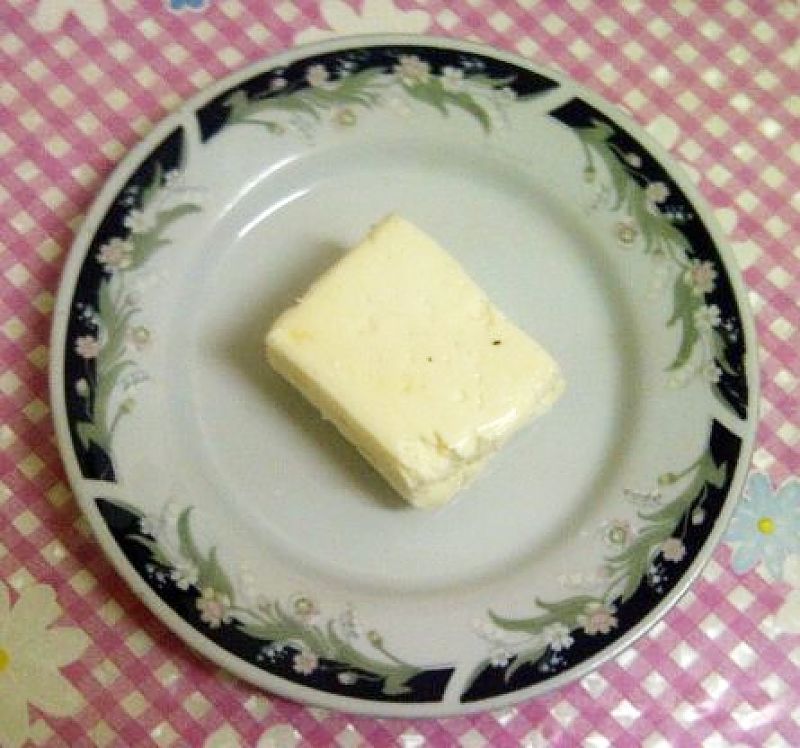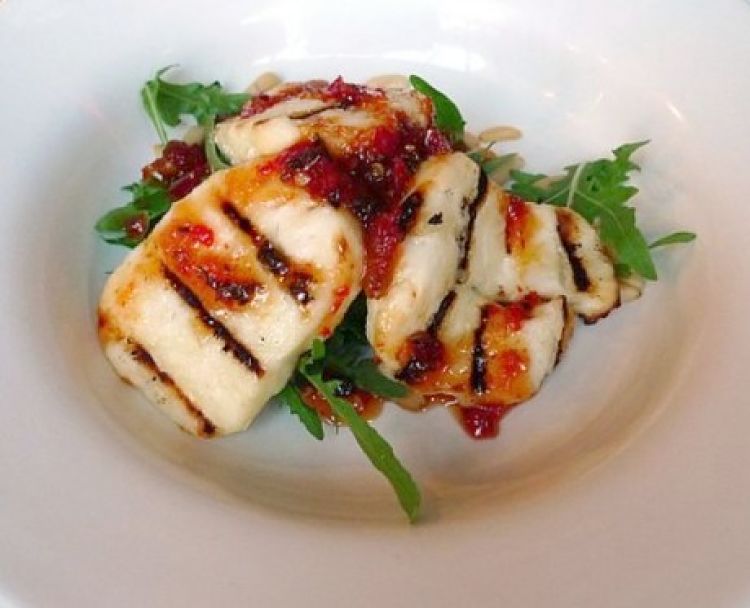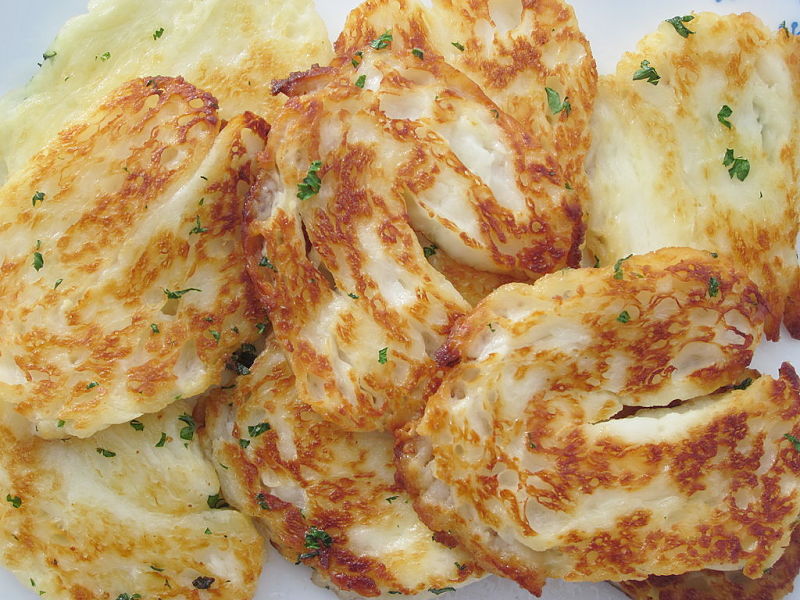How to Make Halloumi Cheese at Home with Easy Recipes and Guide
Halloumi cheese is set with rennet and is very unusual in that no acid or acid-producing bacteria are used in its preparation. It is easy to make with children giving a helping hand. You need a lot of milk but only simple equipment.
Children get mesmerizing by the sight of the milk solidifying from the liquid to make a soft fresh cheese. You can use a vegetarian rennet as a substitute if you prefer.
Halloumi cheese is very versatile as it has a high melting point and so can easily be fried or grilled on toast. The relatively high pH (low acid) and high temperatures used to make the whey proteins separate from the milk also contributes to its non-melting characteristics when heated.
Mint leaves are often added to Halloumi as a preservative or as a garnish. It is a fresh cheese that keep for a few days in the refrigerator.
Many people store Halloumi in brine, as this makes it drier and saltier.



How to Make Halloumi Cheese at Home with Easy Recipes and Guide
Homemade Halloumi Cheese Recipe (simplified)
Ingredients
- 10 liters full-fat milk
- 1 tablespoon salt for poaching the curds
- 1 teaspoons vegetarian or traditional rennet
- 120g extra salt for brining the cheese (optional)
- Good quality meat or other thermometer (you need to know the temperature accurately)
Method for making Halloumi Cheese at Home with Kids
► Put the milk into a wide-bottom pan and heat, stirring occasionally to a temperature of 32-36 degrees C (90-97 degrees F). This is human body temperature and so is safe for children. Higher temperatures are often used when making Halloumi cheese commercially.
► Remove the pot from the stove and pour in the rennet, dissolved in a little water. Stir gently to mix the rennet into the milk.
► Let the mixture settle for about 60 minutes to let the rennet do its job. The mixture set like jelly or a junket.
► Cut the curds in the pot into small cubes ( 1 x 1 inch; 3 x 3 cm), by slicing the mixture using a long thin-bladed knife, making cuts in a grid pattern. This encourages the curds to separate from the whey. Set the pot aside for about 30 minutes.
► Next reheat the mixture to about 38 degrees C (100 degrees F) and keep at this temperature over very low heat for about 30 minutes.
► Line a large sieve or colander lined with a fine tea towel or piece of muslin. Suspend over a large saucepan or pot that will collect the drained liquid. Use a large perforated spoon to scoop the curds into the cloth lined sieve. Cover and leave the mixture to drain for about 60 minutes until firm.
► The next step is to poach the curds and you need to supervise children as high temperatures are involved. Put the whey (the liquid that drains from the curds) into a large pot, that is big enough to take the curds so that they can be poached in the whey. Heat the liquid to 85 degrees C (185 degrees F) and add 1 tablespoon of salt.
► Transfer the curds onto a board and slice into long blocks about 2 inches (5 cm) wide.
► Check the temperature of the whey is at 85 degrees C (185 degrees F) and then gently slide the cheese blocks into the hot whey.
► This sets the cheese. Keep the mixture at this temperature for about 30 minutes. When the cheese blocks float to the surface. Carefully transfer the cheese block that float to the top back into the draining container. The cheese will be quite soft at this stage, but will firm up as they cool.
► Once cooled, the cheese will be firm and can be eaten and used for grilling and frying, and sliced onto sandwiches or added to salads
► The cheese can be brined for long term storage of several weeks in the refrigerator. Add 500 ml (1 pint; 2 cups) of the whey to 500 ml (1 pint; 2 cups) of boiling water with 100g salt. Cool and then place the cheese block into a large container with a lid and pour the cooled salty liquid over the cheese. Seal and store in the refrigerator.
One Step High Temperature Method (Unsuitable for Children)
Ingredients
- 1 gallon (4 litres) full cream milk (cow or goats milk)
- 1 rennet tablet (vegetarian or traditional)
- 1 tablespoon of water
- 1 teaspoon dried Italian herbs
- 1/2 teaspoon red pepper flakes
- 1 tablespoon salt
For the brine:
- 1/2 cup water
- 1/2 cup whey
- 1 teaspoon of salt
Method
► Pour the milk into a large pot (ceramic or stainless steel) and heat to 195 degrees Fahrenheit (90 degrees C) - use a thermometer as the temperature is critical. Then remove the pot from the heat.
► Dissolve the rennet tablet in a tablespoon of water and then add and add it to the milk. Stir the milk and then set the milk aside covered for about 30 minutes.
► Use a knife or a large spoon to break up the curds into large chunks. Add the herbs, salt and red pepper, and and stir to combine. Let sit for about 10-15 minutes.
► Line a colander or large sieve with cheesecloth and set it over a large heavy bowl.
► Transfer portions of the mixture to a large microwave-safe bowl. Heat with the microwave set of on high for 2 minutes. Stir and then repeat for another 2 minutes. Transfer the portions to the sieve and repeat until the entire mixture has been done.
► Let the whey strain from the curds into the pot for 30 minutes. Then gather the cloth around the curds and pressing with your hands to squeeze the remaining whey from the curds. Keep squeezing and draining as this is the critical process and the excess moisture needs to be removed.
► Sprinkle the curds with salt and transfer them to a container into which they will just fit. Press the curds into the container tightly to form a compact shape. Cover and set aside in the fridge for 20-30 minutes.
► Remove the cheese and cut it into chunks.
► The cheese is now ready to use. Store it in brine made from the whey (see the ingredients list). The cheese texture improves, the longer it is stored, especially in brine. It can be kept of 1-2 weeks in the fridge.